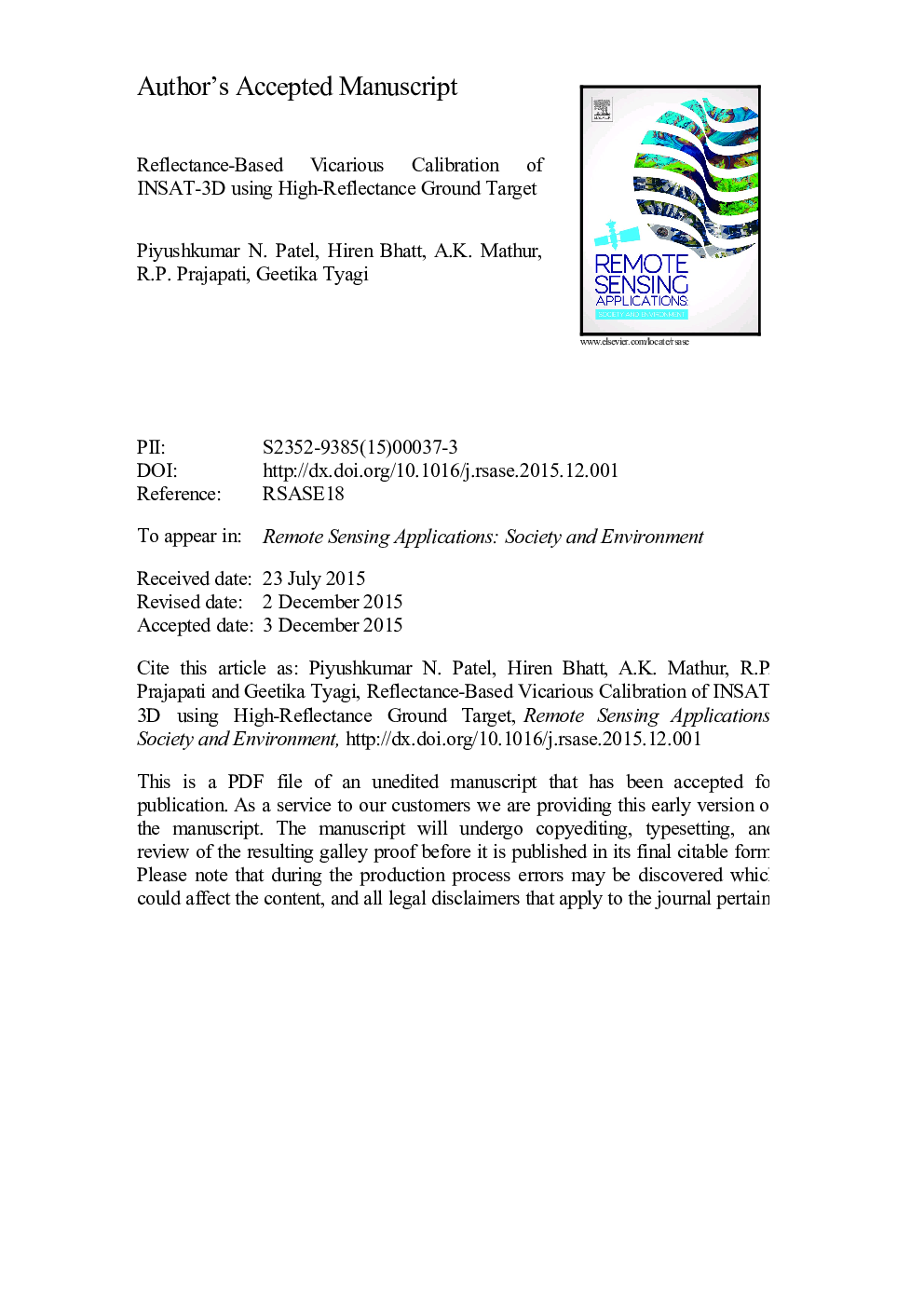| Article ID | Journal | Published Year | Pages | File Type |
|---|---|---|---|---|
| 6344805 | Remote Sensing Applications: Society and Environment | 2016 | 42 Pages |
Abstract
This study is carried out as the post-launch calibration for visible (IMG-VIS) and shortwave (IMG-SWIR) bands of INSAT-3D imager and visible (SND-VIS) band of Indian National Satellite System (INSAT)-3D sounder over land site (Little Rann of Kutch (ROK), Gujarat) on five clear-sky days. This calibration activity is performed to account for the characterisation errors or undetermined post-launch changes in sensor spectral response. We had measured the surface reflectance and atmospheric variables at the site synchronising with the viewing and solar geometry of the INSAT-3D scan. Top of atmosphere (TOA) spectral radiances were computed using 6SV (Second Simulation of the Satellite Signal in the Solar Spectrum) radiative transfer (RT) code with the surface reflectance and atmospheric variables as well as spectral response function (SRF) of each channel. The uncertainties involved due to spatial variability of site and variation in aerosol type in calibration coefficients were also computed. MODIS Bidirectional Reflectance Distribution Function (BRDF) product is used to account the effect of surface anisotropy on TOA spectral radiance. Comparison between 2014 and 2015 vicarious calibration results, indicate that the INSAT-3D measured radiance are stable within 0.38%, 0.18% and 0.13% for IMG-VIS, IMG-SWIR and SND-VIS, respectively. 6SV simulated atmospherically corrected reflectances were found to match much better with the observed surface reflectance in the inverse mode for all three bands. Comparing these results with the previous year's analysis, there is no indication of major change in calibration coefficients for all three bands of INSAT-3D.
Related Topics
Physical Sciences and Engineering
Earth and Planetary Sciences
Computers in Earth Sciences
Authors
Piyushkumar N. Patel, Hiren Bhatt, A.K. Mathur, R.P. Prajapati, Geetika Tyagi,
